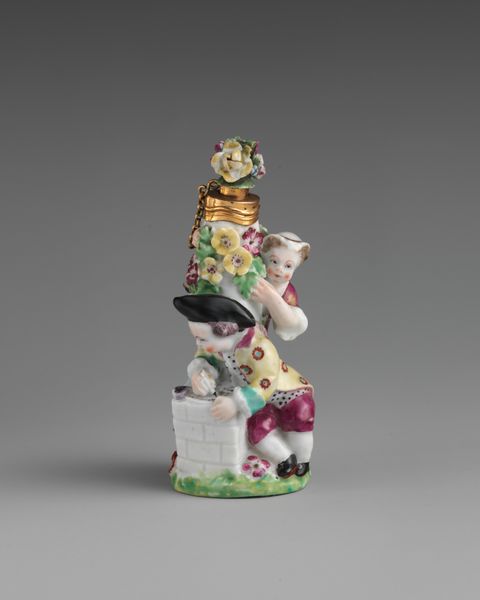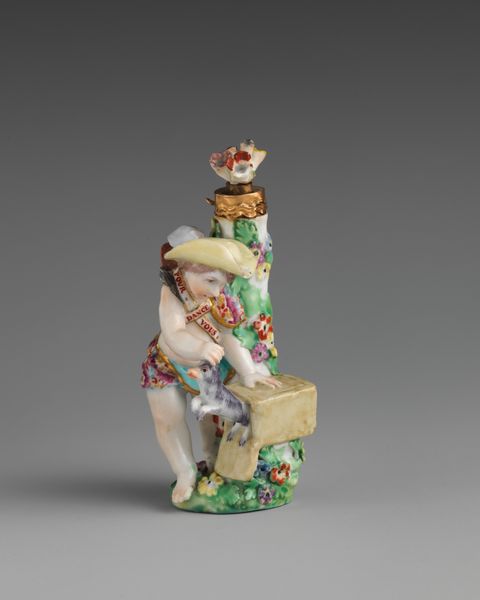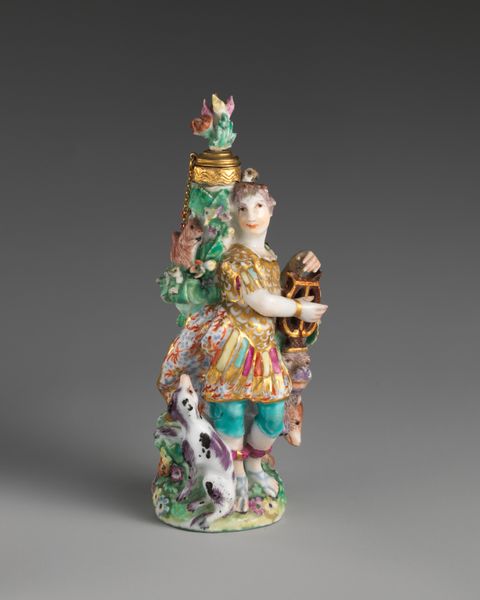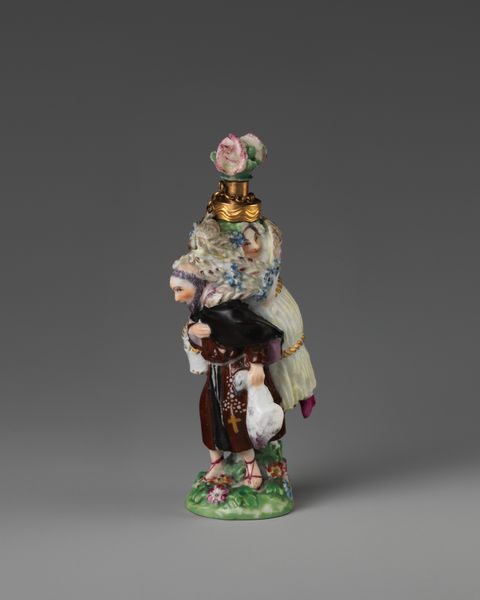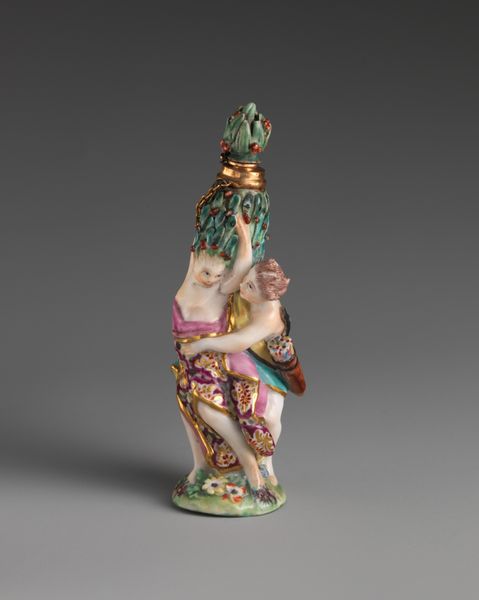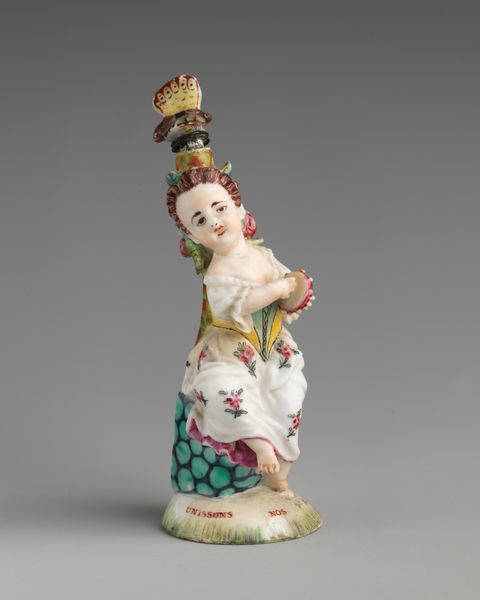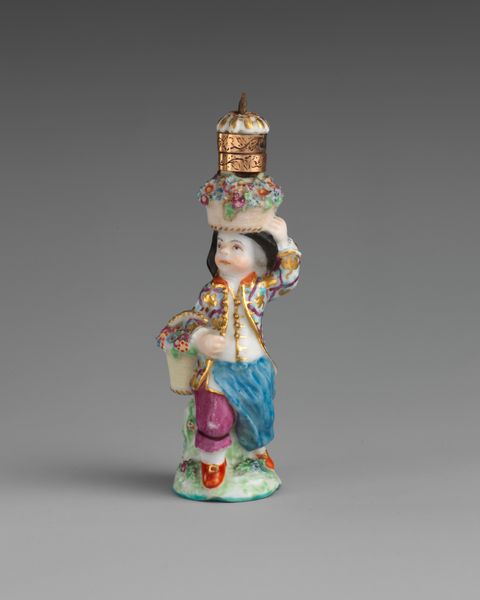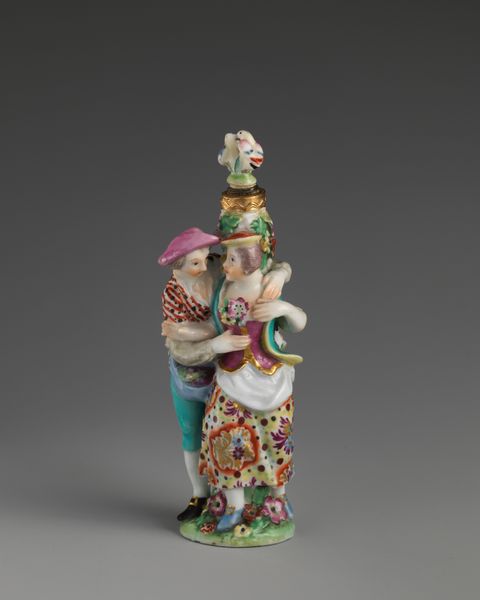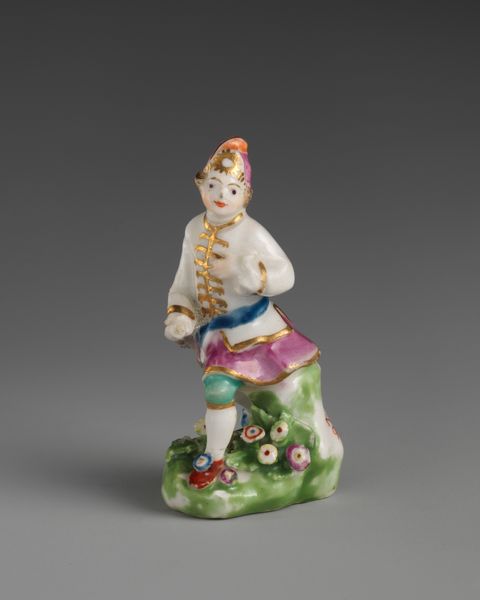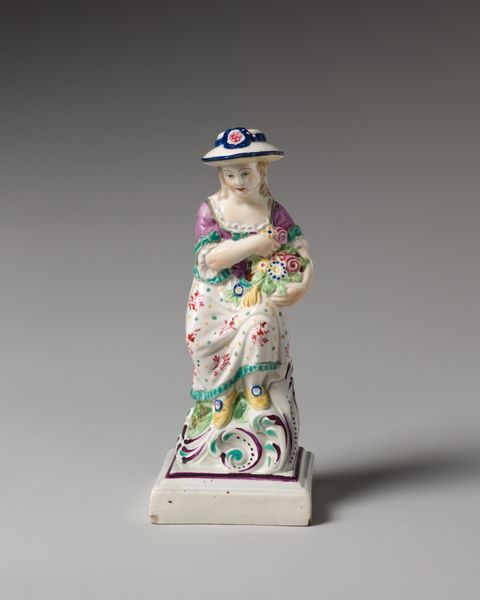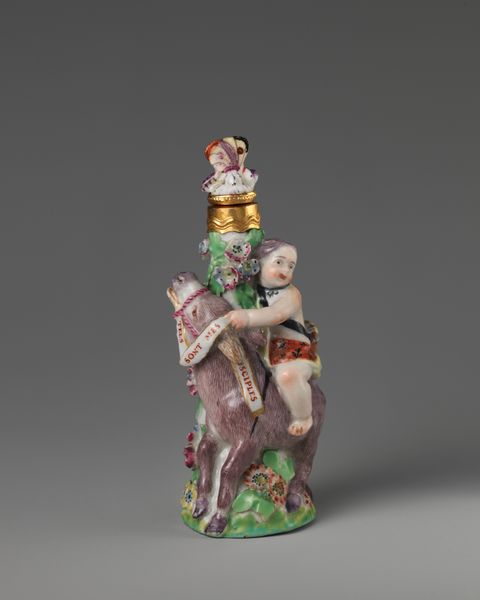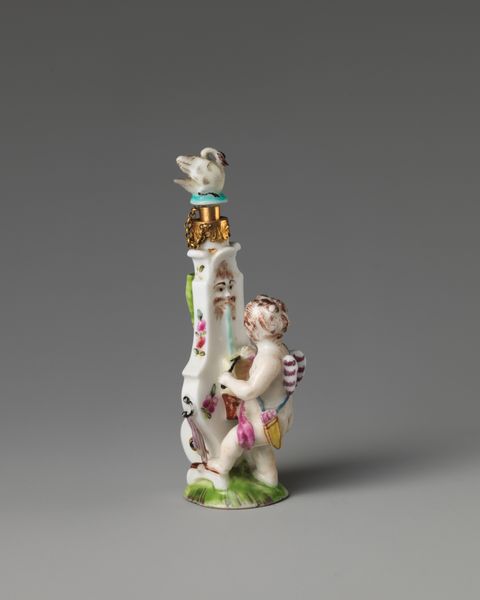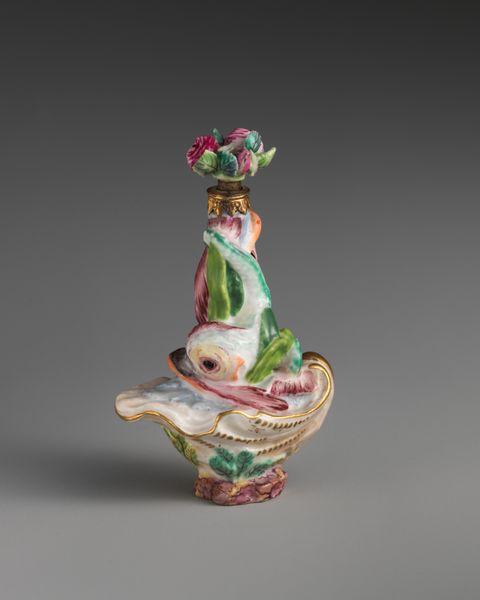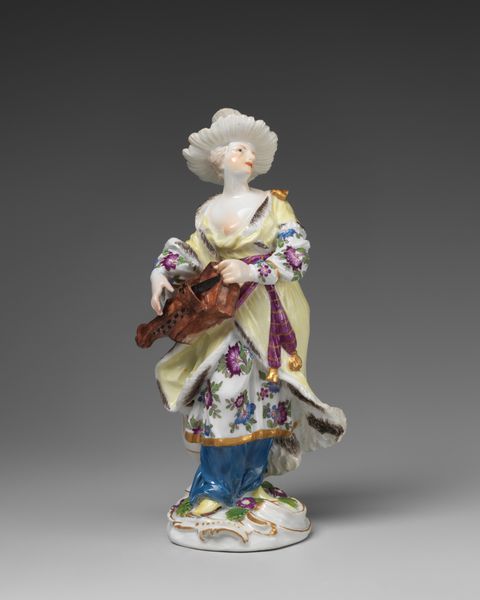
ceramic, porcelain, sculpture
#
ceramic
#
porcelain
#
figuration
#
sculpture
#
decorative-art
#
miniature
#
rococo
Dimensions: 2 7/8 × 1 1/2 in. (7.3 × 3.8 cm)
Copyright: Public Domain
This porcelain sculpture of a monkey with its young was produced at the Saint James’s Factory between 1749 and 1759. During this period, the factory, like others across Europe, embraced exotic animal figures. The appeal of such figures lies in the context of the colonial era, where Europe's fascination with the "exotic" was interwoven with exploitation. In this piece, we see a maternal image–a monkey tenderly holding its young–juxtaposed with human-like attire and posture. The artist has dressed this mother in fashionable clothes. It’s an odd combination of animal and human characteristics, highlighting the complexities of cultural exchange and appropriation. Ultimately, this sculpture asks us to consider our relationship with the natural world, especially in the context of historical power dynamics and cross-cultural encounters. What does it mean to project human qualities onto animals, and how does this reflect our understanding of ourselves and the world around us?
Comments
No comments
Be the first to comment and join the conversation on the ultimate creative platform.
